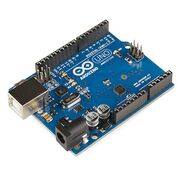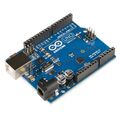Difference between revisions of "Arduino"
Jump to navigation
Jump to search
| Line 38: | Line 38: | ||
** https://sigrok.org/wiki/Openbench_Logic_Sniffer | ** https://sigrok.org/wiki/Openbench_Logic_Sniffer | ||
** http://dangerousprototypes.com/docs/The_Logic_Sniffer%27s_extended_SUMP_protocol | ** http://dangerousprototypes.com/docs/The_Logic_Sniffer%27s_extended_SUMP_protocol | ||
== Problems == | |||
* Buffer is currently sent or parsed backwards (time goes from right to left/zero)!!! | |||
* RLE (=continuous capture) is not properly implemented in sigrok/ols driver, therefore capture length is limited by device memory | |||
* Maximum supported samplerate is reported by device and received by sigrok, but not reflected in pulseview GUI | |||
* Triggering is still a work in progress, but generally works for samples below 1MHz. over 1MHz works for a basic busy wait trigger that doesn't store until after the trigger fires. | |||
== Resources == | == Resources == | ||
Revision as of 12:25, 30 June 2019
 | |
| Status | in progress |
|---|---|
| Source code | ols |
| Channels | 6 |
| Samplerate | 4MHz |
| Samplerate (state) | — |
| Triggers | none (SW-only) |
| Min/max voltage | -0.5V — 5.5V |
| Threshold voltage | Fixed: VIH=3.0V—5V, VIL=0V—1.5V |
| Memory | ATmega168: 532 (or lower), ATmega328: 1024 (or lower), ATmega2560: 7168 (or lower) |
| Compression | RLE |
| Website | github.com |
SUMP protocol implementation for Arduino.
Hardware
- Main chip: Atmel ATmega168/328/2560
- Input pins: With optional internal pullups (currently has to be modified at compile-time)
- 3.3V and 5V output: 3.3V, 5V
- 16MHz crystal: 16.000
Note that some older arduino designs and arduino clones feature FTDI usb-serial chip, which might be used as logic analyzer as well: FTDI-LA
Photos
Protocol
- This uses the extended SUMP protocol as implemented by sigrok in ols driver.
Problems
- Buffer is currently sent or parsed backwards (time goes from right to left/zero)!!!
- RLE (=continuous capture) is not properly implemented in sigrok/ols driver, therefore capture length is limited by device memory
- Maximum supported samplerate is reported by device and received by sigrok, but not reflected in pulseview GUI
- Triggering is still a work in progress, but generally works for samples below 1MHz. over 1MHz works for a basic busy wait trigger that doesn't store until after the trigger fires.

